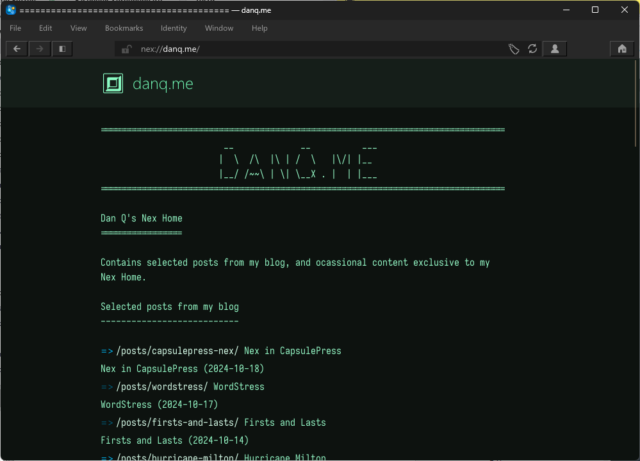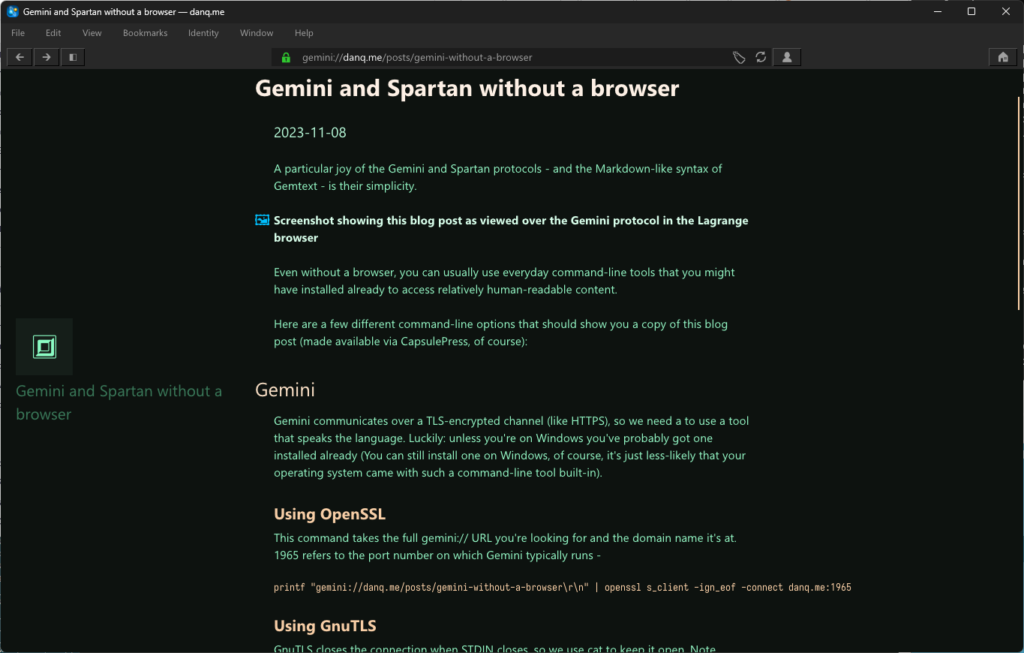I’ve added Nex support to CapsulePress!
What does that mean?

nex://danq.me/ looks in my favourite desktop Gemini/smolweb browser Lagrange.
Nex is a lightweight Internet protocol reminiscent to me of Spartan (which CapsulePress also supports), but even more lightweight. Without even affordances like host identification, MIME types, response codes, or the expectation that Gemtext might be supported by the client, it’s perhaps more like Gopher than it is like Gemini.
It comes from the ever-entertaining smolweb hub of Nightfall City, whose Web interface clearly states at the top of every page the command you could have run to see that content over the Nex protocol. Lagrange added support for Nex almost a year ago and it’s such a lightweight protocol that I was quickly able to adapt CapsulePress’s implementation of Spartan to support Nex, too.
require 'gserver' require 'word_wrap' require 'word_wrap/core_ext' class NexServer < GServer def initialize super( (ENV['NEX_PORT'] ? ENV['NEX_PORT'].to_i : 1900), (ENV['NEX_HOST'] || '0.0.0.0'), (ENV['NEX_MAX_CONNECTIONS'] ? ENV['NEX_MAX_CONNECTIONS'].to_i : 4) ) end def handle(io, req) puts "Nex: handling" io.print "\r\n" req = '/' if req == '' if response = CapsulePress.handle(req, 'nex') io.print response[:body].wrap(79) else io.print "Document not found\r\n" end end def serve(io) puts "Nex: client connected" req = io.gets.strip handle(io, req) end end
Why, you might ask? Well, the reasons are the same as all the other standards supported by CapsulePress:
- The smolweb is awesome.
- Making WordPress into a CMS things it was never meant to do is sorta my jam.
- It was a quick win while I waited for the pharmacist to shoot me up with
5G microchipsmy ‘flu and Covid boosters.
If you want to add Nex onto your CapsulePress, just git pull the latest version, ensure TCP port 1900 isn’t firewalled, and don’t add USE_NEX=false to
your environment. That’s all!



